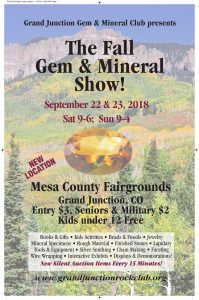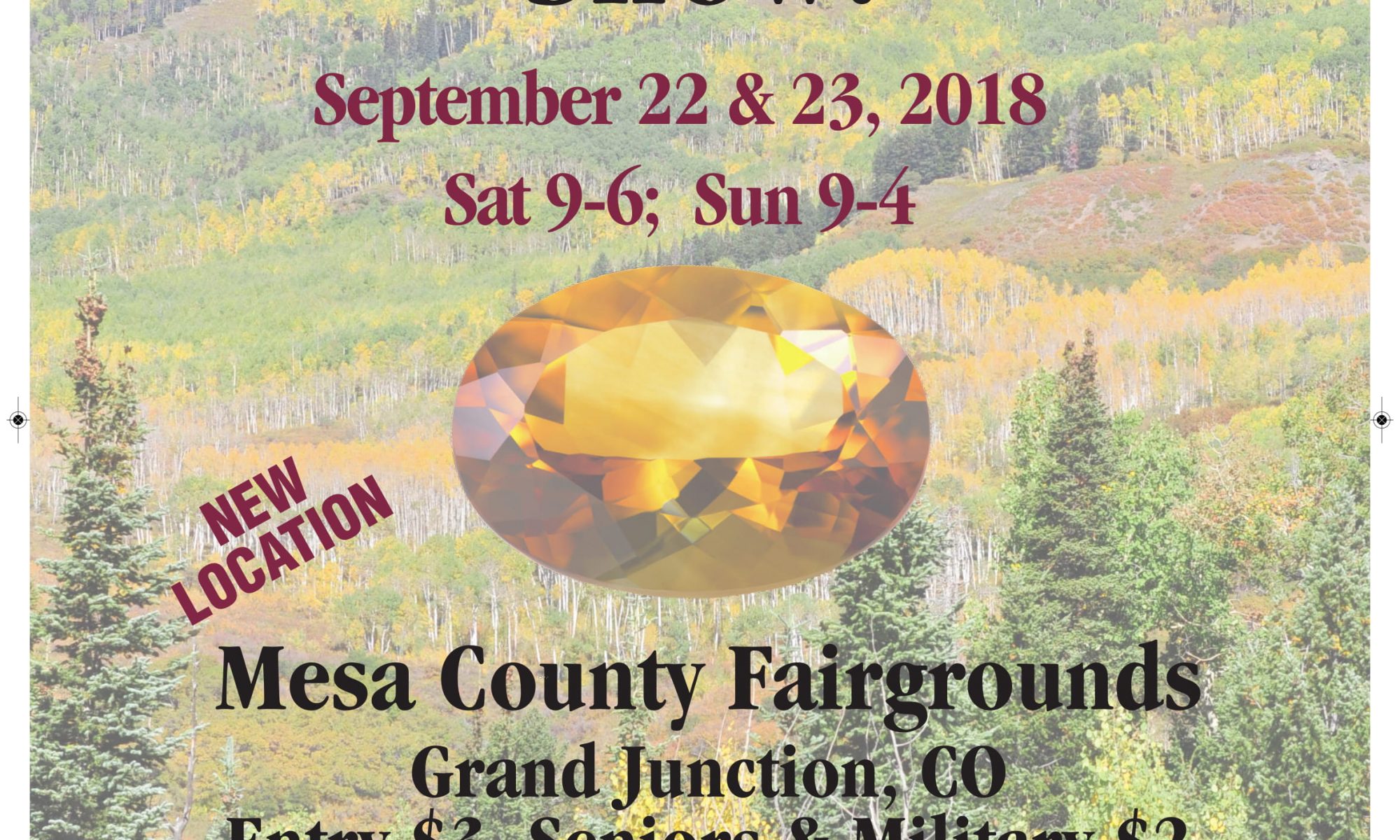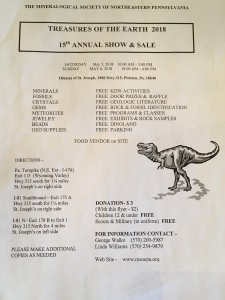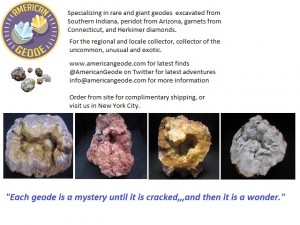Grand Junctio Gem and Mineral Show
Gem and Mineral Show presented by Grand Junction Gem and Mineral Club is September 22-23, 2018.
New Location!
Mesa County Fairgrounds
Grand Junction, CO
Entry $3, Seniors and Military $2
Kids (under 12) are FREE!

http://www.grandjunctionrockclub.org/
The Grand Junction Gem and Mineral Club, Inc, is a nonprofit, taxexempt, educational organization. Our purpose shall be exclusively educational and social: (a) to increase and disseminate knowledge of the earth sciences pertaining to minerals, gems, rocks, artifacts, and fossils and similar subjects; (b) to promote and perpetuate knowledge of the lapidary arts;: (c) to encourage field trips; (d) to encourage greater public interest and education in gems fossils and minerals, cooperating with established institutions in such matters.
The Grand Junction Gem and Mineral Club meets on the second and fourth Thursday of each month at 6:30 pm in
our club building. November and December meetings will be on the second Thursday only. Our Annual Show is Mother’s
Day Weekend and is held at Two Rivers Convention Center at 159 Main St, Grand Junction, CO 81501. Classes and
workshops are offered throughout the year. There are sign-up sheets at the clubhouse to get on a waiting list and scheduled
classes are posted in the newsletter.
The Grand Junction Gem & Mineral Club, Inc. is affiliated with the Rocky Mountain Federation of Mineralogical Societies.
The club is located at 2328 Monument Road Grand Junction, CO, mailing address: P. O. Box 953, Grand Junction, CO
81502 The Club is a nonprofit, 501(c3) tax-exempt, educational organization.





